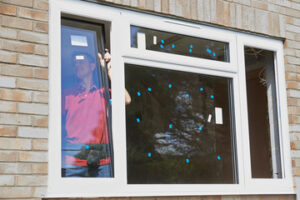Unlike shaving, waxing removes hair at the root. This means it will take longer for hair to grow back.

Waxing Langley BC leaves skin smooth and even. It also reduces the appearance of ingrown hairs. Those who wax regularly will also notice that their hair grows back finer and sparser over time.
Waxing is a hair removal technique that removes unwanted body hair from the root. It is a fast and effective method for getting smooth and silky skin for an extended period of time, as opposed to shaving and depilatory creams, which only remove the hair at the surface of the skin. When a person gets waxed, they can expect the hair in the treated area to not grow back for two to eight weeks.
The process of waxing involves first washing the area to be treated and then drying it thoroughly. This is to ensure that any dirt, dead skin cells or products are not preventing the wax from adhering to the hair follicles. Next, the technician applies a pre-wax treatment to reduce friction and irritation. Then, they will use a clean application tool (such as a popsicle stick or spatula) to apply the wax. The wax is heated to the proper temperature before it is applied, and when it is removed, it pulls out the hair from the root.
After a waxing session, a person may experience red bumps or minor bleeding in the treatment area. These are a normal part of the process and can be minimized by applying a cold compress to the affected area. Waxing can be done on almost any area of the body, including the eyebrows, face, pubic area (also known as bikini waxing), arms, legs, abdomen, chest and knuckles.
One of the biggest benefits of waxing is that it does not damage or cause abrasions to the skin like other hair removal methods, such as shaves. Shaving can irritate the skin, leaving it dry and flaky, while waxing removes all of the dead skin from the surface. Waxing also does not leave cuts or snags in the skin, making it more comfortable than other types of hair removal.
It is important that the hair is at least 1/4-inch long before a person comes in for a waxing appointment, because this will allow the wax to grip onto the hairs and pull them out effectively. Ingrown hairs can occur if the hair is too short, but regular waxing can help prevent them.
How Does Waxing Work?
Waxing removes hair from the root, which is why it’s a better option than shaving, which cuts or nicks the surface of your skin. With proper technique, waxing can result in smooth, hair-free skin that lasts for weeks (or longer).
You might experience a bit of discomfort during the waxing process, which depends on your pain tolerance and who performs the treatment. However, you can minimize discomfort by exfoliating before your appointment and taking a warm shower immediately afterward to loosen the hair follicles. It’s also helpful to powder the area lightly so that perspiration doesn’t interfere with the removal of your hair.
A professional waxing technician uses an applicator to apply the wax to your skin in the direction of your hair growth. A strip of cloth, such as muslin, is placed on top, and once the wax has cooled, your technician pulls it off in the opposite direction of hair growth. The removal of each hair follicle plucks it from the dermis layer of your skin, resulting in smooth, hair-free skin.
When your hair grows back after waxing, it’s usually finer and not as thick as it was before, and it will likely come in darker and softer as well. However, shaving disrupts the hair growth cycle and can lead to increased regrowth, especially in the areas you’ve been waxing.
Although waxing is a great solution for removing unwanted hair, it’s not permanent and you will need to repeat the procedure periodically. However, if you do wax regularly and maintain a consistent schedule, your hair will grow back thinner, weaker, and lighter than it was before. Regardless, it’s important not to shave between waxing appointments, because this can cause hair to grow back in thicker, darker, and coarser than before. Also, be sure to avoid tanning or using sun lotion in the days leading up to your wax. This can cause your skin to swell, which can prevent the wax from adhering properly to your hair follicles. You should also avoid using any skin products containing retinol right before getting waxed, as this can cause your follicles to become inflamed and irritated.
What Are the Benefits of Waxing?
There are many benefits of waxing, but some of the most popular include:
Longer-Lasting Smoothness
Waxing removes hair from the root, unlike shaving which only cuts the hair at the surface of the skin. This results in your skin being silky smooth for weeks, compared to days when you’re shaving or using depilatory creams.
Unlike shaving, which can result in ingrown hairs (hairs that grow back into the skin rather than up out of it), waxing actually prevents them. This is because when you get your hair waxed professionally, the esthetician removes the entire hair follicle so it can’t grow back in that same spot again. This also helps keep your skin clean and clear of those pesky ingrown hairs.
Finer Regrowth
Another great benefit of waxing is that over time, as you regularly get your hair waxed, the hair that does regrow will be much finer and softer than it was before. That’s because your hair follicle is becoming weaker from the regular waxing. This is a huge advantage over shaving or using other at-home methods of hair removal.
Besides being less irritating to your skin, waxing is also very quick and effective. It can remove large patches of unwanted hair at once, making it a faster option than other hair removal methods, such as epilation. Waxing is also a safe, natural option for people who have certain medical conditions that cause excess hair growth (hirsutism).
Although some people might be uncomfortable with the pain of waxing, there are ways to reduce the discomfort. For example, some waxes contain soothing ingredients like aloe vera and chamomile, which can help calm the skin during the process. Additionally, many people find that the more they get their waxes done, the less painful it becomes.
Those who are especially sensitive should always make sure to use an anti-irritant wax, which will help reduce the amount of irritation and redness that can occur afterward. They should also avoid tight clothing, which can exacerbate the pain of waxing and lead to ingrown hairs. Finally, it’s a good idea to take an over-the-counter pain medication an hour or two before your appointment.
How Often Should I Get Waxing?
There is no set answer to this question, as everyone’s hair growth cycle and skin type will vary. However, a general rule of thumb is that waxing every four weeks will result in smooth skin maintenance. We advise a consultation with one of our estheticians to determine what time frames work best for you.
Waxing is a much more efficient method of hair removal than shaving or using depilatory creams. Ingrown hairs, which are often the result of these other methods, can be painful and difficult to treat. They can also lead to infections and other serious complications. By contrast, waxing removes the entire hair from its root, allowing new growth to come in thinner and lighter than before. Over time, this can significantly reduce the need for other temporary hair-removal methods.
Before a wax, we recommend that you trim any stray hairs to the recommended length (about 1/4″ to 1/2″). For the treatment to be most effective, your hair should be at least this long so that it can adhere to the wax and be removed effectively.
Additionally, we recommend avoiding sun exposure or tanning in the days leading up to your wax. Tanning and other forms of sun exposure cause your skin to exfoliate, which can reduce the effectiveness of a wax.
We also encourage you to avoid any harsh body products in the days following a wax. The chemicals in many body lotions can be irritating to the sensitive areas that are removed by waxing, and they can also interfere with the natural production of oils that protect your skin.
Lastly, we suggest avoiding any type of folliculitis treatment in the days following your wax, which can include any treatments that use tretinoin or other retinoids. These medications can open up your hair follicles, making them susceptible to inflammation and other problems.
Ingrown hairs can also be a problem when you use an electric razor or tweezers to remove hair. These hair-removal tools leave the surface of your skin rough and bumpy, which can make ingrown hairs more likely to develop. By contrast, waxing removes the hair from its root, so that new growth is softer and less prone to ingrown hairs.

